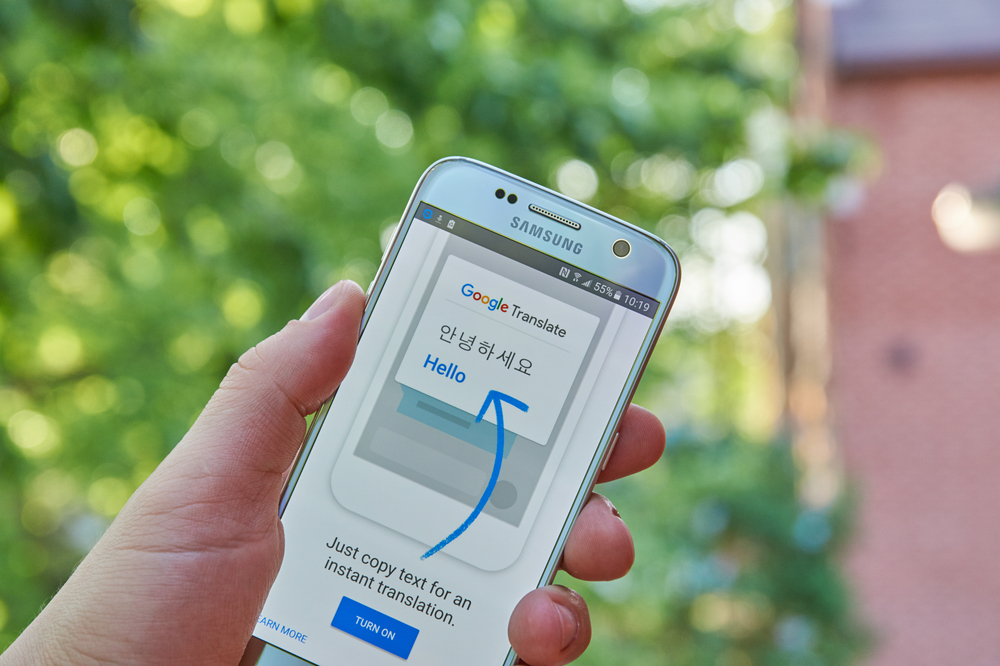Human Translation vs. Machine Translation: Key Differences and When to Use Which?
2023.07.21Machine translation is the process of automatically converting source text in one language to text in another language. Budgetary concerns, pressing deadlines, or the relatively large volume of a source text are all possible reasons why people opt for machine translation. On the other hand, given the fluidity and sometimes, the ambiguity of human language, whether the output of machine translation can meet quality requirements is often debated.
Are you in need of translation services but can’t choose between using machine or human translation services? Do machine translation engines do a better job than human translators? What is the difference between these two types of translation services? This article has the answers to your questions.
What Is Human Translation?

This is the most traditional form of translation service, which relies on human intelligence to interpret and translate written content. Human translation involves hiring language experts or translation service providers with the domain expertise to convert the text from one language to another.
Pros of Human Translation
There are numerous benefits of human translation, and some of them include the following:
• Language Expert
One of the criteria for becoming a translator is that you must be an expert in both the source and target languages. This ensures you always provide quality and stay on top of trends.
• Better Domain Knowledge
Have you ever wondered why most clients choose human translators over machine translators despite being more expensive? It is safe to say that a translated content piece is never complete without some human touch, especially when it will be applied to formal occasions or culturally relevant settings.
With good domain knowledge and an understanding of content purpose, human translators can improve the translated content by helping customers face challenges and achieve their goals. For example, they can help content authors identify how the target audience can best use information through the translation process, and this ensures you send relevant information to your audience.
• Cultural Sensitivities
Machines are not proficient in picking up cultural connotations like taboos, idioms, or figures of speech that are mainly understood in a particular language. But a person who has been taught the language already knows what can be considered taboo or slang in the culture and can always use the right ones to connect with their audience.
• Up-to-Date Translation
Translation is not just about having a means of recreating your content, it is also about connecting more with your audience, and this is one of the things you get from using human translation—translators are always aware of the latest trends and slang. And these engaging translated pieces can be done in a timely manner or on ad-hoc requests.
Cons of Human Translation
Human translators can provide up-to-date and high-quality translation work; they are able to adapt a translated content piece to ensure that it is culturally relevant to and appropriate for the specific peculiarities of the target areas. That said, human translation services have a few downsides:
• Time-Consuming
One of the main issues with human translation is that it takes a lot of time and effort to translate content for the following reasons:
- Speed of proceeding content. Human translators type more slowly compared with the process of machine translation.
- Variety of foreign languages. A piece of the source text is often associated with multiple language pairs. As proficiency in foreign languages is limited for a human translator, it takes time to translate text into more than one language. Assigning tasks to different translators, training translators, and managing the overall project are time-consuming. Machine translation, on the other hand, has no such limitations.
• The Price Is Higher
Human translation is expensive because a professional translator must be hired in order to translate the content, and this comes with considerable related costs. For instance, a novice translator has to undergo different levels of training to acquire relevant skills, capabilities, and knowledge; businesses need to invest in employee training to have employees stay current on trends.
Another aspect to consider is cost in project management: building qualified teams for projects, scaling up and improving the project operations, maintaining quality, recording and adjusting for future projects, etc. All of these must be factored in when devising a budget for human translation projects.
What Is Machine Translation (MT)?

Machine Translation (MT) is a process of using a computer system to translate content without any human involvement. Modern machine translation engines are driven mainly by neural machine translation (NMT) technology. It does not do simple word-to-word translation. It transfers the full meaning of a piece of content from the original language to another.
How Does it Work?
NMT technology is now considered the standard in machine translation development. NMT technology learns languages by using artificial intelligence and continuously improves knowledge via neural networks, a specific machine learning method. It analyzes a large corpus of texts and recognizes how the words influence one another.
What Would Affect the MT Performance?
In order to improve the operational efficiency of your machine translation projects while maintaining excellent quality, here are the 4 factors you should consider:
- Which technology is used to train the machine translation engine?
- Do you have the access to sufficient training data? (We are talking about a large corpus of high-quality bilingual texts.)
- What types and forms of texts are required for the translation project?
- How mature is the machine translation engine when it comes to processing the language pairs in case?
Pros of Machine Translation
Some companies opt for machine translation services because they provide multiple benefits in the following aspects:
• Time-Saving
Machine translation might be the fastest way of translating any content. It can instantly translate a high volume of content within a few minutes, and this helps you save time, especially when you need a quick turnaround on a project. Furthermore, sampling and filtering are often conducted with neural machine translation—human translators can go through several versions and then pick out the best translation work to improve on. This facilitates the workflow of a translation project.
• Consistent Performance
Machine translation engines are able to translate several language pairs with similar, if not the same quality. As discussed earlier, human translators are proficient in a limited number of languages, and the translation quality can vary with individual conditions, such as tiredness or overload. Machines don’t have such an issue as long as the quality of the source content is the same.
• Cost-Effective
There are many machine translation options today, and most of them are highly affordable and give you better control over the budget, time, and project progress. Surely, human translation is still the preferred option when it comes to official documents, promotional, high-visibility content, and so on. But if you’re using it as an individual to learn about a foreign product, machine translation should suffice.
Cons of Machine Translation
Even though machine translation offers instant translation, it still doesn’t work entirely like human translation. Below are some of the downsides of machine translation.
• Quality Concerns for High-Priority Content
When evaluating the feasibility of machine translation, the end-use of the text must be taken into account. For example, adopting machine translation for product packaging is not recommended, as information like features directly influences a buyer’s decision; any errors or confusion can lead to an inferior product experience.
Also, machine translation should not be used for publicly distributed content to avoid any possibility of negative impacts on an organization’s reputation or operations. Simply put, if the content is mission-critical in terms of usage or target audience, human translation is your best bet.
• Not Fit-for-Purpose
There is no way you can data-train a machine translation engine to understand the culture. While human translators are soaked up in the culture and are thus able to pick slang and nuances here and there, machines can hardly relate words to context. This remains a key limitation of machine translation despite technological development these days.
• Data Security
Most businesses find adopting online machine tools interesting, but they all forget the risk associated with using them. When you agree to their terms and conditions, you give them more control over your data. And this increases your risk of exposure because they can easily access your details without your approval.
Human Translation vs. Machine Translation
When choosing between machine and human translation, it is important to understand what you will get or lose from each of them. This will help you face challenges and make the right project decision. The chart below illustrates the differences between these two types of translation services.
| Machine Translation | Human Translation | |
| Quality | Depends on the source text (domain and writing quality) | High-quality, target audience-oriented |
| Time | Instant | Depends on the length, volume, format, client requests, etc. |
| Cost | More predictable and usually lower than human translation | Requiring a larger budget |
| Data security | Lower | Higher (legally legitimate) |
Bottom Line
Proud to be powered by people, Linguitronics is a professional language service provider that excels in human translation. We work with experienced linguists and adopt the latest technologies to ensure translation quality; we’ve been committed to providing a translation service that enables your business to communicate across cultures.
On top of the expertise in human translation, we have been investing resources in researching and training machine translation engines. If you still can’t choose between using a machine or human translation services, don’t hesitate to Contact Linguitronics. We’d be more than pleased to provide you with our insights.
